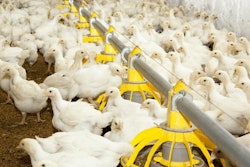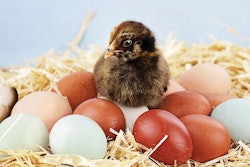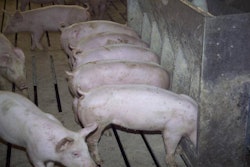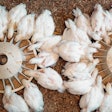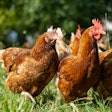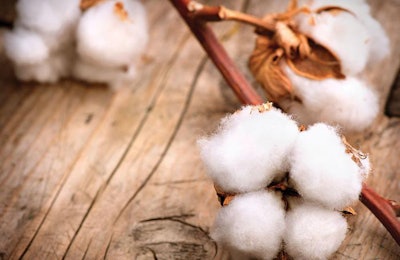
This article appears in the November/December issue of Pig International. View all of the articles in the digital edition of this magazine.
We are used to considering fiber in terms of crude fiber or other similar quantitative terms, but modern nutritional thinking wants to separate fiber into its functional properties, namely solubility and fermentability. The following will help you better understand fiber nutrition.
1. Fiber is hard and indigestible plant matter
Plants synthesize carbohydrates using light as their source of energy, a process called photosynthesis. These carbohydrates are the building blocks that all plants use for a number of different purposes. In general terms, they serve as storage carbohydrates (starch) or as cell wall components (fiber). Fiber not only gives plants their structural characteristics but also provides a level of defense against herbivore animals and pathogens. As a result, while feed grains are valued for their abundance in starch (energy), they also contain significant quantities of unavoidable fiber. The latter, unlike starch, is not digested by monogastric animals, interferes with digestibility of other nutrients and decreases dietary energy density. In brief, fiber has been traditionally considered an undesirable component for animal feeds. This view, however, is changing rapidly.
2. Fiber is a complex word
Fiber may be just one word, but it describes a myriad of different and distinct components, hence the confusion around the significance of fiber nutrition. Basically, fiber refers to all non-starch polysaccharides (NSP) plus lignin, which belongs chemically to polyphenols. Non-starch polysaccharides include entities like celluloses, hemicelluloses, beta-glucans and pectins. All NSP are polymers, larger or smaller, linear or branched, comprised of one or more types of monomers. For example, celluloses are large, linear polymers of glucose, while hemicelluloses are smaller, often branched polymers of several sugars such as arabinose, xylose, mannose, etc. Since cell wall composition differs among plant species, variety and tissue types and is affected by factors such as maturation stage and crop growing conditions, it is easy to appreciate why even fiber scientists have a hard time describing the very complex topic of fiber.
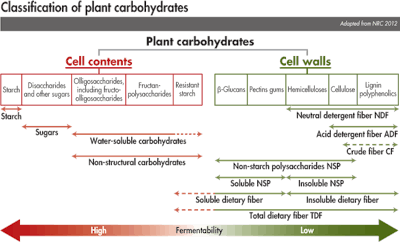
Fiber describes a myriad of different and distinct components.
3. Chemical composition is just not enough
Because fiber consists of so many chemically different compounds, no single analytical method available today can account for total fiber content of any specific plant source. The oldest method is “crude fiber,” which measures lignin and some of the celluloses and gives the nutritionist a vague idea on fiber quantity, but not quality. Of course, there are more recent methods such as the acid detergent fiber (ADF) and neutral detergent fiber (NDF) analyses that provide a much-improved picture of the fiber profile of any given feed ingredient. The first (ADF) accounts for all celluloses and lignin content, whereas the second (NDF) includes all hemicelluloses, celluloses and lignin. Nevertheless, both ADF and NDF leave out beta-glucans and pectins, which have been found of significant nutritional value. It now becomes clear, when we consider fiber in detail, the quantity and the quality of fiber (profile) become both important for modern nutrition practice. And, even then, in order to know how fiber will behave in the intestinal tract we have to consider its biological properties.
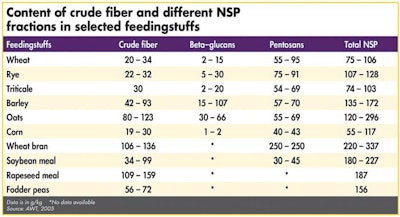
4. Biological profile is also important
Solubility of a specific fiber source as well as fermentability are properties of great importance in monogastric animal nutrition. The degree to which fiber is water-soluble affects gut viscosity in the small intestine. This in turn affects transit time of feed through the gut and reduces access to digestive enzymes ending in lower digestibility for all nutrients. Therefore, excess solubility is a largely undesirable trait. On the other hand, fiber fermentability in the large intestine is related to prebiotic effects promoting gut health. However, the right amount and mix of fermentable fibers are equally important, as is the prevailing microbiota profile.
Solubility. Both pectins and beta-glucans are highly soluble fiber components. Arabinoxylans are also soluble but to a lesser and more variable degree. Soluble fibers may form a gel-like structure when they interact with water in the gut. As a result, the viscosity of the gut digesta increases, and this is why certain NSP enzymes may offer some benefits in certain classes of monogastric animals. Examples of highly soluble feed ingredients include beet pulp, which is rich in pectins; wheat, which is rich in arabinoxylans; and barley and oats, which are rich in beta-glucans. On the other hand, ingredients rich in insoluble fibers include those rich in cellulose and lignin, with a primary example being pine tree lignocellulose powder.
Fermentability. The degree to which fiber can be utilized by gut microbiota depends on its chemical composition. Additionally, solubility affects fermentability to a considerable degree: the more soluble a fiber component is, the more rapidly it can be fermented. For example, pectins and beta-glucans are highly fermentable, whereas hemicelluloses and cellulose are fermentable to a lesser degree, with lignin being virtually non-fermentable. Also, it has been shown that fiber particle size affects fermentability. Here, a finer particle size of the feed containing any fiber source results in higher fermentability. Finally, it merits pointing out that insoluble fiber is not necessarily non-fermentable. Again, a prime example can be found in pine wood lignocellulose, which is highly insoluble, but certain types can also provide a useful fermentable fraction.
A finer particle size of the feed containing any fiber source results in higher fermentability.
Other biological functions. Most fiber sources do not exist in isolation. The majority of fiber sources are a wholesome ingredient containing other substances, beyond those typically considered in animal nutrition (for example, protein or minerals). Such substances can be beneficial or negative for the animal and therefore they should be taken into account; something difficult using modern feed formulation systems. Such a negative example is the presence of silica in rice hulls (not bran), which has a very strong gut abrasive action leading to profuse diarrheas. In contrast, humans and animals are known to eat the inside of tree bark (cambium) that is a rich source of vitamins and antioxidants — thus, using our example above of pine tree lignocellulose, if such ingredient is composed of the whole tree trunk, we end up enriching diets with powerful phenolic compounds that possess considerable antioxidant properties.
Practical considerations
It is clear that crude fiber or any other current chemical laboratory analyses are not sufficient to predict the behavior of all different fractions of what we call “fiber.” Instead, it is proposed to focus not only on total fiber (something that makes sense only in terms of its laxative effect), but also on the physiological properties of solubility and fermentability. While it is relatively easy to determine these two properties of fiber in most common feedstuffs, finding the right profile (quantity and relative proportions to each other) for concerned animal species is a much more difficult proposition. Nevertheless, modern nutrition requires such enhanced precision.
Learn more: Phenolic compounds in animal feeds


